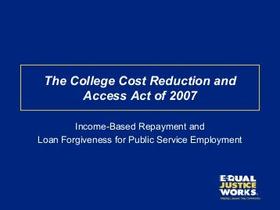The Parent’s Guide to FAFSA and Financial Aid for Community College
Introduction
Navigating the financial aid process for community college can feel overwhelming—particularly with recent changes to the FAFSA, new terminology like the Student Aid Index (SAI), and shifting deadlines. This core guide walks parents—and their students—through the FAFSA process for the 2025–26 academic year, explaining what’s changed, how to apply effectively, and how to maximize financial aid for a community college pathway.
Understanding FAFSA & Why It Matters for Community College
What Is FAFSA and Who Needs to File?
The Free Application for Federal Student Aid (FAFSA) is the gateway to federal grants, work-study, and loans—and it’s widely used by state and institutional aid programs as well (Wikipedia). Completing the FAFSA is one of the most important steps to reduce the true cost of community college.
Dependent students—typically those under age 24—must include financial information from one or both parents (contributors) on the FAFSA to determine eligibility for aid.
What’s New in FAFSA for 2025–26?
1. Student Aid Index (SAI) Replaces Expected Family Contribution (EFC)
The longstanding "Expected Family Contribution (EFC)" has been replaced by the Student Aid Index (SAI) as part of FAFSA simplification. Unlike the EFC, the SAI can be negative (down to –$1,500), potentially increasing eligibility for aid (financialaid.sfsu.edu, ctstate.edu, Wikipedia).
2. Streamlined, Parent-Friendly Format
The FAFSA has been dramatically shortened—from up to 108 questions to as few as 36—and adapts dynamically, presenting only relevant questions (bridgevalley.edu, dacc.nmsu.edu). Parents and students will also benefit from direct data import from the IRS via the IRS Direct Data Exchange—eliminating manual tax entry and reducing errors (bridgevalley.edu, dacc.nmsu.edu).
3. Contributors Must Provide Consent
Every contributor—including parents, stepparents, and spouses—must provide consent for their Federal Tax Information (FTI) to be shared from the IRS. Without consent, the SAI cannot be generated and aid eligibility cannot be determined (financialaid.sfsu.edu, ctstate.edu).
4. Improved Parent Identification Tool
A new “Who’s My FAFSA Parent?” tool helps families determine which parent’s information should be included—especially useful for separated or divorced families (Investopedia).
5. FAFSA Already Open for 2025–26
The 2025–26 FAFSA opened earlier than planned—on November 21, 2024—to avoid delays seen in past years. Submit as soon as possible; online submissions may be processed within 1–3 days (paper takes longer) (Investopedia, Wikipedia, MarketWatch).
6. Updated Financial Details
The maximum Pell Grant remains $7,395, and federal student loan interest rates for undergraduates have dropped to 6.39% for the 2025–26 award year (Investopedia).
7. State & Priority Deadlines Matter
Federal FAFSA deadline: June 30, 2026—but many state and college deadlines are much earlier. For example, California’s priority FAFSA and Cal Grant deadline for students aiming at UC or CSU is April 2, 2025 (San Francisco Chronicle).
Step-by-Step: How Parents Can Help with FAFSA
Step 1: Get FSA IDs Ready
Both student and parent contributors need FSA IDs before starting the form. Delays in verification are common—start early (MarketWatch).
Step 2: Gather Documents
Have ready:
2023 tax returns
Income records, bank and asset statements
Social Security numbers
List of colleges (up to 20 can be included)—a recent increase over the previous limit of 10 (financialaid.sfsu.edu, dacc.nmsu.edu).
Step 3: Start Early, Submit Online
Submit online via StudentAid.gov or the mobile app for fastest processing. Aim well before June 30, 2026, and check for earlier deadlines from your state or school (Investopedia, San Francisco Chronicle).
Step 4: Monitor FAFSA Submission Summary
After submission, review the FAFSA Submission Summary (replacing the former Student Aid Report) to confirm your SAI and Federal Pell eligibility (ctstate.edu, dacc.nmsu.edu).
Step 5: Follow Up with the College
Once processed, colleges will send financial aid offers based on your SAI. If your financial situation has changed significantly, submit a special circumstances appeal to your financial aid office.
FAQs Parents Ask (and the Answers)
Will my student qualify for aid automatically?
Not necessarily—but many community college students qualify for some level of aid, especially Pell Grants—depending on their SAI and Cost of Attendance (COA).
Does owning a 529 plan affect FAFSA eligibility?
Yes—but the impact is modest. If the 529 is parent-owned, up to 5.64% of its value counts in calculating the SAI; if student-owned, up to 20% counts. Grandparent- or sibling-owned 529s no longer influence FAFSA calculations under recent updates (AP News).
What if parents are separated or divorced?
Use the “Who’s My FAFSA Parent?” tool to determine which parent’s information to include. The rule: report income from the parent who provides the most financial support, not necessarily the custodial parent (financialaid.sfsu.edu, dacc.nmsu.edu, Investopedia).
Can filing late still result in aid?
Yes—but priority funds may run out. Certain states and schools operate on a first-come, first-served basis. Always check and meet your local and institutional deadlines (San Francisco Chronicle, Investopedia).
Conclusion & Key Takeaways
Quick summary for busy parents:
File early and online—FAFSA is already open and fast processing is possible.
SAI is the new measure—can be negative, expanding aid for many.
Gather FSA IDs and documents early to avoid delays.
Use the FAFSA Submission Summary to confirm aid eligibility.
Watch deadlines carefully—federal, state, community college, and financial aid office timelines all matter.
Appeal if your financial situation changes—especially for unexpected life events.
Internal Links to Enhance Navigation
For insights into college options: check our Community College Profiles offering comparative dashboards of in-district tuition, campus facilities, and student demographics.
For planning strategies: see our guide on Building a College Budget for tips on balancing tuition, living costs, and aid.















